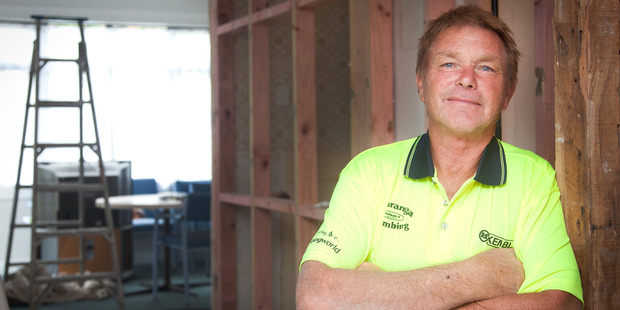
Employers should experiment with pay cuts and salary freezes for older workers to overcome age discrimination at work, a leading human resource professor says.
But any company that follows her advice would risk a public campaign run by advocacy group National Seniors Association.
Lynda Gratton, a London Business School professor and HR consultancy Hot Spots founder who advises big banks and insurance companies in Australia, said companies should consider not giving employees pay rises as they get older, or even giving them a pay cut.
Ms Gratton, who was in Sydney on Wednesday to address the World Business Forum, said: “I think one needs to be a bit more creative about how we think of age and salary structure.
“One difficulty is in any corporation, because people’s salary goes up every year, the older you are often the more you’re paid and that makes older people more expensive.
“So one of the things we’ve been playing around with is, would it be sensible for people’s salary not to go up just because they’re getting older and that would make them easier to employ? Would it be possible to think about their salary going down and they do more mentoring and coaching work?
“I think we’ve only ever seen age and salary as a straight line that goes up but why don’t we think about it as a line that goes down?”
OUT OF TOUCH
National Seniors Australia chief executive Michael O’Neill said her comment was “completely out of touch” with the Australian industrial relations system and he would be prepared to fight against any bank or insurance company that reduced employees’ pay on the basis of their age.
“I would be happy to run a campaign against any institution that chooses to reduce workers’ pay because of their age and I’m sure consumers will react,” he said.
“We recognise the contribution older Australians make in the workplace. They should be remunerated fairly and it’s nonsense to say otherwise. Negotiating pay based on a birth certificate is clearly unacceptable.”
Age Discrimination Commissioner Susan Ryan said Ms Gratton’s comments did not apply to the Australian industrial environment.
“In general people are not paid more just because they had birthdays,” she said. “Most people negotiate their pay with their employer.”
Ms Ryan said in some cases workers might want a less-demanding role as they get older.
“Both the employer and the employee may agree on a different role, with a lesser pay package,” she said.
Most banks and financial sectors had been doing well in addressing age discrimination in the workplace, she said.
“They do it because their customers want to deal with experienced officers. So I think banks recognise the value of the experience of older employees to their business.”
LEGAL HOT WATER
Employers who took Ms Gratton’s advice might also find themselves in legal hot water.
Employment law firm Justicia managing partner Sarah Rey warned that employers who gave staff pay cuts or salary freezes purely on the basis of their age exposed themselves to the risk of unlawful age discrimination.
“Ultimately anti-discrimination laws prevent employers from discriminating on a variety of grounds. So if you are treating someone poorly and it has nothing to do with their performance, then that would be discrimination. If you’re looking to treat them less favourably it has to be something other than age,” she said.
More older workers are projected to remain in the workforce beyond the traditional retirement age of 65. But a survey commissioned by the Age Discrimination Commission found in the past two years more than half of jobseekers over 50 were discriminated against on the basis of age.
The Treasury’s Intergenerational Report in 2015 predicts the workforce participation rate among those older than 65 will jump from 12.9 per cent in 2015 to 17.3 per cent in 2055.
To encourage employment of older workers, the government has introduced a grant of up to $10,000 to employers who hire workers older than 50 who have been unemployed for six months or longer.
Ms Gratton said while she was not aware of companies pursuing her pay strategy, in practice older workers were already taking pay cuts as they quit their jobs and moved into different jobs, such as consultancy roles.
HAPPENS ANYWAY
“I think in labour market it happens anyway because people leave corporations and they get jobs that pay them less. I think in reality it is happening but I don’t think corporations acknowledge that.”
One way of thinking about salary could be linked to child rearing, she said.
“One could actually say the time when people need most money is when they are in their 30s, when they have young kids to look after. When they are getting paid more in their 40s and 50s is actually when they don’t require as much money.”
Ms Ryan said Ms Gratton’s comment about the expenses related to child-rearing responsibilities did not reflect the diversity of the nation’s families.
“Many in their 50s have got their second families. If they have a second family and a second mortgage they would be in a terrible situation.”
Source: AFR












